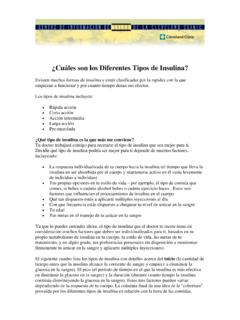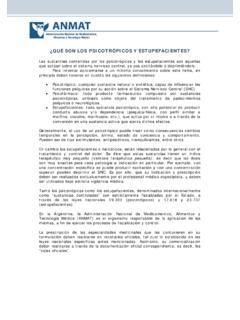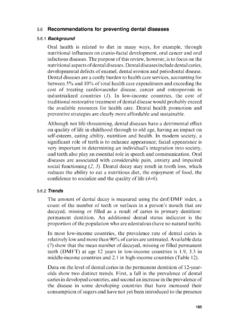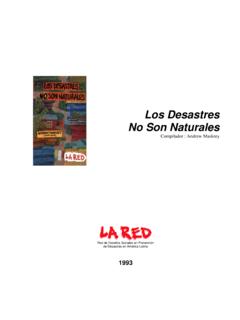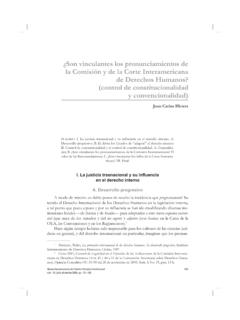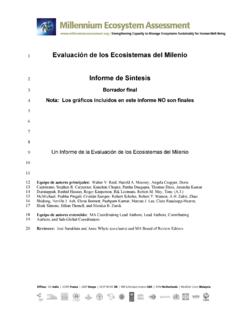Transcription of WHERE TO SEE THE MONARCHS IN CALIFORNIA
1 WHERE WHERE TTO SEE O SEE THE MONARCHSTHE MONARCHSIN CALIFORNIAIN CALIFORNIAT wenty-five Selected SitesDesigned, Written, and Compiled by David MarriottFounder and Executive Director of Education and ResearchEdited byMia Monroe, Chair, Board of DirectorsWaiter Sakal, PresidentDonna Marriott, Assistant EditorPublished by the Monarch ProgramCopyright CALIFORNIA Monarch Studies. , 1997 (1st Edition)IntroductionThe mystery of migrating monarch butterflies has captured the attentionof people throughout the world. East of the continental divide in NorthAmerica, MONARCHS generally migrate to central Mexico from as far away asOntario, Canada. MONARCHS west of the divide fly to the coast of Californiato spend the winter. They cluster together on tree limbs during the wintermonths in CALIFORNIA by the thousands, and in Central Mexico by the CALIFORNIA , migrating MONARCHS begin appearing along the coast inOctober.
2 There are over 300 overwintering sites from south of Ensenada,Baja CALIFORNIA , to north of San Francisco, in Sonoma County. By mid-November, most MONARCHS have chosen their winter homes. The butterfliesdiapause (hibernate) for several months. In late January warmer days and theadvent of spring stimulate mating activity. Female MONARCHS are the first todisperse from overwintering sites. They fly inland, looking for early sproutsof milkweed (Asciepias species) to deposit their eggs. By early March, over-wintering sites are overwintering sites in CALIFORNIA are on private property and noteasily accessible to the general public. The Monarch Program recommendspublic viewing at the overwintering sites listed below. The time to see thegreatest numbers of butterflies is mid-November to mid-December. In lateDecember through January, some MONARCHS shift to other sites, or disperse,others die.
3 However, some sites may have butterflies into early March. Allpopulations are estimates for the 1997/98 the directions to the sites below and look on the southeast sideof the roosting trees. Many listings are on park grounds, thus, a docent orranger may direct you to the roosting trees. On cool days, the MONARCHS willlook like leaves with their wings closed, hanging from tree branches. Asunny afternoon is a good time to visit a site if you do not know WHERE theroosting trees are located. In the late afternoon, you can follow the mon-archs' flight to their selected Cycle and Autumn Migration Movements: MONARCHS thatemerge in late August through October and migrate to their chosenoverwintering destinations may live 7 or 8 months. Their "children"and succeeding generations only live 4-5 weeks. By the time the 4thor 5th generation emerge, it will be September again and these great-great grandchildren will migrate and live through the winter as adultbutterflies.
4 This is a good example of strategy for survival since nativelarval plants are dormant throughout the winter months. In the latespring and summer months, the time from egg to butterfly is about 4weeks: egg (4-6 days); caterpillar (12-16 days); chrysalis (9-12 days). CountyPopulationSiteTwenty-five Selected SitesPopulation estimates are based on multiple years of data; including earlyautumnal migration reports this season, and our 1997 reports from volunteerswho monitored summer breeding habitats west of the Rockies. Listings begin atthe southern sites near the Mexican border, and continue to the northernmostrange, in Sonoma County. Overwintering habitats in Baja CALIFORNIA , Mexicohave been excluded since they are on private property. All sites in Californiawere carefully chosen for easy access onto public property, to foster familyevents, and educational activities.
5 Please respect all parking and trespassing lawsnear overwintering ParkSan Diego900 Presidio Park is located on a hill above Old Town State Historic Park and isaccessible from numerous exits near the junction of Interstate 5 and 8. FromTayor St., take Chestnut St. and turn left on Presidio Dr. Travel to the top of thehill and turn left on Cosoy Way. The MONARCHS roost in the Canary Island Pinetrees along each side of Cosoy Way. In November, the butterflies often roost inthe eucalyptus trees between Serra Historical Museum and the pine trees (nofee). CampusSan Diego4,500 The eucalyptus groves on the UCSD campus have been the winter home tomonarchs long before the campus was founded. Sightings date back to the1950's. This year's population estimate includes two sites. The main site is locat-ed near the Mandeville Performing Arts Center. Take La Jolla Village Dr.
6 Westfrom Interstate 5. Turn right on Gilman Dr. and continue through the UCSDG ilman entrance. Turn left on Mandeville Ln. The MONARCHS are located in euca-lyptus trees along the blue screen art sculpture (parking fee). Another UCSD siteis located by the UCSD Coast Apartments. Continue on La Jolla Village Dr.,traveling right onto North Torrey Pines Rd.,turn left on La Jolla Shores Dr., andturn left on Azul St. The MONARCHS are located in the eucalyptus grove off AzulSt. (no parking 9:00 AM - 2:00 PM, except Sunday, otherwise no fee). GroveSan Diego900 The Carlsbad Hosp Grove was once a very large overwintering site beforetree cutting and development. From Interstate 5, go east on Carlsbad Village Dr.,left on Monroe St., right on Hosp Way, and turn left at the top of the hill on GroveAve. Park in the visitor lot and continue walking on Grove Way to the eucalyp-tus grove at the end of the street.
7 Locate the trail and walk to the right around alarge gully. The MONARCHS are in the trees above the gully (no fee). If you are looking for MONARCHS , you will be greeted with big smiles fromrangers, interpretive specialists, and naturalists. Tagged MONARCHS are alsofriendly -- they have something to teach us! State BeachOrange1,000 Doheny State Beach is a great place to bring the family. The monarch roost-ing trees are next to a sandy beach, water activities, playgrounds, acres of wellkept lawns, picnic tables, and nearby ocean front restaurants. Exit Interstate 5going west on Pacific Coast Hwy. (Beach Cities Exit). A the main intersection,turn left on Dana Harbor Dr. Take the first left into the State Park. Ask rangersto direct you to the roosting trees (entrance fee). Central ParkOrange3,500 Acres of park land, ponds, playing fields, jogging trails, and eucalyptus treescan be found at Huntington Central Park.
8 From Interstate 405, travel west onWarner St. Turn left on Golden West St. The park is on the left. Continue past thepark and turn left into the Huntington Central Library. Park in the far northeastcorner. There are two roosting sites at the park: the eucalyptus trees near theAmphitheater and a short walk to an area below the parking lot and restrooms offof Gothard St. (no fee). Gibbs ParkOrange700 The eucalyptus grove at Norma Gibbs Park is an example of a monarchoverwintering site that has been saved from housing development. The propertywas donated to the City of Huntington Beach as park land, with pathways, pic-nic tables, and a 400 sq. ft. tile inlay of MONARCHS and text describing story aboutthe migrating MONARCHS . From Interstate 5, travel west on Warner St. Turn rightafter the Meadowlark Golf Course onto Graham St. The park is located on theleft.
9 The roosting trees are near the entrance to the park (no fee). Carrillo State BeachLos Angeles800 Located along Hwy. 1, the population of MONARCHS will be most plentiful atLeo Carrillo State Beach in November and December. The butterflies are locat-ed in the eucalyptus trees along the creek next to the campground. Ask a rangerfor assistance (entrance fee). Real ParkVentura10,000 This is a popular site for residents of Ventura because it is easily accessibleand a quiet place to take the family for a picnic. The roosting trees are eucalyp-tus and located above the creek, across from the Patrician (gated community) at4700 Aurora Dr. From 101, go north on Victoria Ave., left on Telegraph Rd., leftoil S. Bryn Mawr, and right on Aurora Dr. to the Park (no fee). ,000 This site is easy to get to if you can find an accessible entrance. The butter-flies roost in eucalyptus trees along an agricultural dirt road parallel to HarborBlvd.
10 In Ventura. From Hwy. 101 take Harbor Blvd. south, turn right on Oyster,park immediately and look east across Harbor Blvd to a grove of eucalyptustrees. It is dangerous to access the site crossing Harbor Blvd. We recommendaccessing the dirt road further south and walking north to the site. The dirt roadis used by the general public but the land could be private property? (no fee).10. Ellwood MainSanta Barbara85,000 The Ellwood site is easy to access from Hwy. 101 traveling west of the townGoleta. Take the Storke exit south and turn right on Hollister Ave., and left onCoronado (just after the 7-11 Store). Park at the end of the road, walk into thegully, turn right and walk a few hundred feet to a clearing. The MONARCHS will beclustering in a small ravine to the northwest, 30 to 80 feet up in the trees (no fee).11. Tecolote CanyonSanta Barbara22,000 The Tecolote site is several miles west of Ellwood Main.
